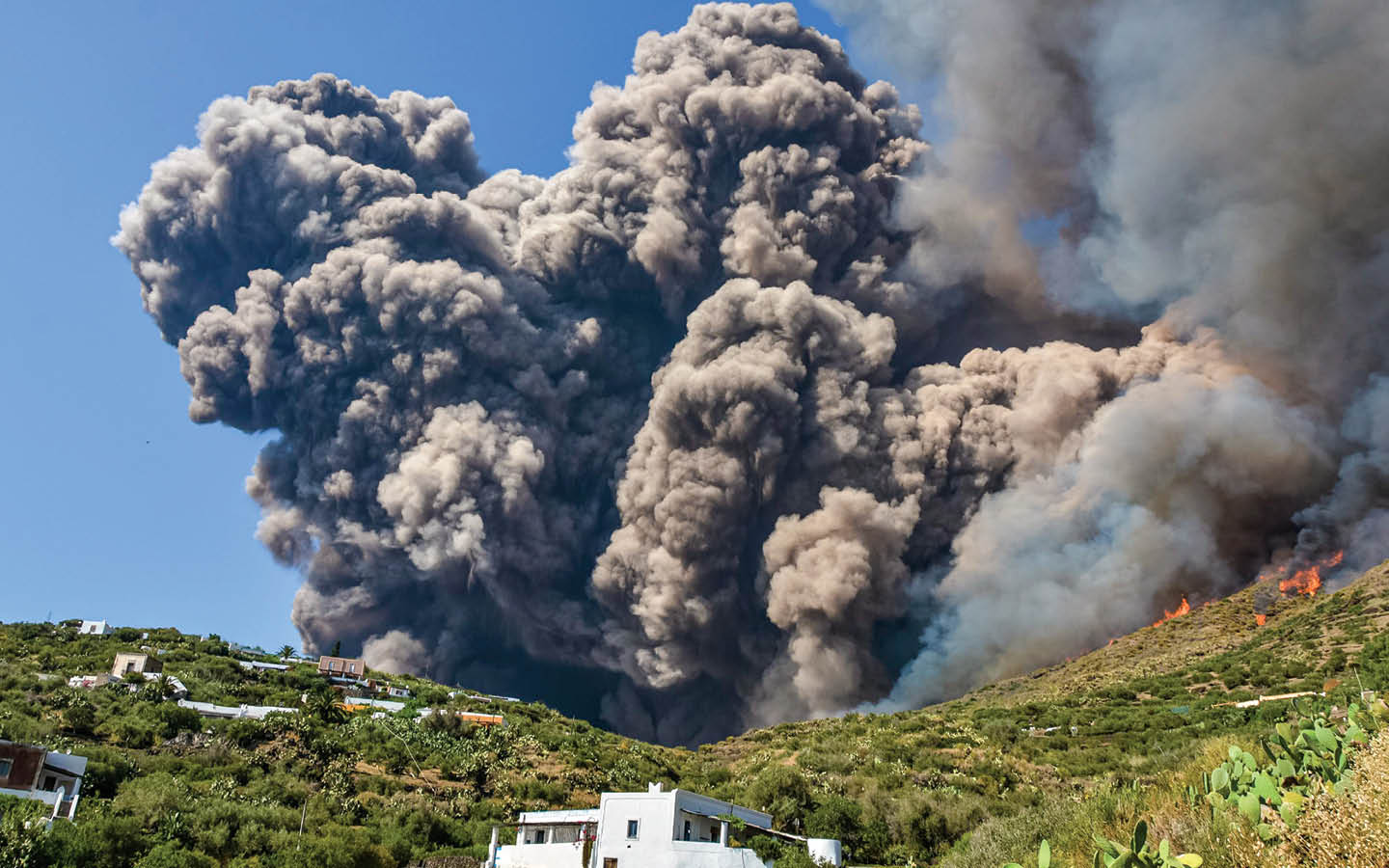Jim McMahon/Mapman ®
Imagine you’re on the black sand beach of Stromboli island in Italy. Huge cliffs rise out of the sparkling blue sea. Palm trees sway gently in the breeze. White houses sit at the base of beautiful green hills. You could stay forever.
And then: BOOM! An explosion shakes the ground. You jump up and look around, ready to run. But nobody else seems to care.
That’s because the people who live here are used to it. Stromboli isn’t just an island. It’s an active volcano—and it just erupted. It’s been erupting every 15 to 20 minutes for more than 2,000 years.
Picture this: You’re on Stromboli island in Italy. The sand on the beach is black. The sea is blue. There are huge cliffs. There are palm trees. There are beautiful green hills. You could stay forever.
Then: BOOM! An explosion shakes the ground. You jump up. You’re ready to run. But no one else seems worried.
Why not? The people who live here are used to it. Stromboli isn’t just an island. It’s an active volcano, and it just erupted. It erupts three or four times an hour. It’s been doing that for more than 2,000 years.
Imagine you’re on the black sand beach of Stromboli island in Italy. Massive cliffs rise out of the sparkling blue sea, palm trees sway gently in the breeze, and white houses sit at the base of beautiful green hills. You could stay forever.
And then, BOOM! An explosion shakes the ground. You leap up and look wildly around, ready to run—but nobody else seems especially concerned.
That’s because the people who live here are used to it. Stromboli isn’t just an island—it’s an active volcano, and it just erupted. It’s been erupting every 15 to 20 minutes for more than 2,000 years.

